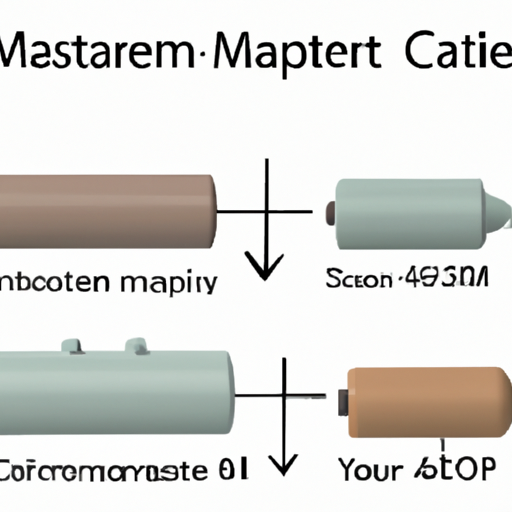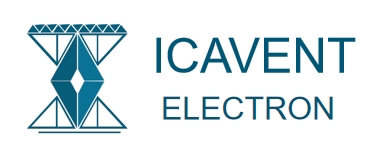What is the Comparison Difference Between Mainstream Capacitor Measurement Models?

I. Introduction
Capacitors are fundamental components in electronic circuits, serving as energy storage devices that play a crucial role in filtering, timing, and coupling applications. Their ability to store and release electrical energy makes them indispensable in various electronic devices, from simple circuits to complex systems. Accurate measurement of capacitance is vital for ensuring optimal circuit performance, making it essential for engineers and technicians to understand the different measurement models available.
This blog post aims to compare mainstream capacitor measurement models, providing insights into their principles, advantages, limitations, and suitability for various applications. By understanding these differences, professionals can make informed decisions when selecting measurement tools for their specific needs.
II. Understanding Capacitor Measurement
A. Basic Principles of Capacitance
Capacitance is defined as the ability of a capacitor to store an electrical charge per unit voltage. It is measured in farads (F), with practical applications often using microfarads (µF) or picofarads (pF). Several factors influence capacitance, including the physical characteristics of the capacitor, such as the surface area of the plates, the distance between them, and the dielectric material used.
B. Importance of Accurate Measurement
Accurate measurement of capacitance is critical for several reasons. First, it directly impacts circuit performance; incorrect capacitance values can lead to malfunctioning circuits, reduced efficiency, or even component failure. Second, various industries, including telecommunications, automotive, and consumer electronics, rely on precise capacitance measurements for quality control and product development.
III. Overview of Mainstream Capacitor Measurement Models
A. Traditional Measurement Techniques
1. LCR Meters
LCR meters are widely used for measuring inductance (L), capacitance (C), and resistance (R). They operate by applying an AC signal to the capacitor and measuring the resulting current and voltage.
**Advantages:**
- Versatile: Can measure L, C, and R.
- User-friendly: Typically equipped with digital displays and straightforward interfaces.
**Limitations:**
- Frequency range may be limited compared to more advanced models.
- Accuracy can be affected by the test frequency and the capacitor's characteristics.
2. Capacitance Bridges
Capacitance bridges are precision instruments that compare an unknown capacitance to a known standard. They operate on the principle of balancing the bridge circuit to determine the unknown value.
**Advantages:**
- High accuracy and precision.
- Suitable for laboratory settings and calibration purposes.
**Limitations:**
- More complex to operate than LCR meters.
- Generally more expensive and less portable.
B. Advanced Measurement Techniques
1. Impedance Analyzers
Impedance analyzers measure the impedance of a capacitor over a wide frequency range, providing detailed information about its behavior in AC circuits.
**Advantages:**
- High accuracy across a broad frequency range.
- Capable of characterizing complex impedance, including loss factors.
**Limitations:**
- More expensive than traditional measurement tools.
- Requires a deeper understanding of impedance theory for effective use.
2. Time-Domain Reflectometry (TDR)
TDR is a technique that sends a pulse down a transmission line and measures reflections caused by discontinuities, including capacitors. It provides information about the capacitance and other parameters.
**Advantages:**
- Non-destructive and can measure capacitance in situ.
- Useful for identifying faults in complex circuits.
**Limitations:**
- Requires specialized equipment and expertise.
- Interpretation of results can be complex.
C. Emerging Technologies
1. Digital Multimeters (DMMs)
DMMs are versatile tools that can measure voltage, current, and resistance, with some models capable of measuring capacitance.
**Advantages:**
- Highly portable and user-friendly.
- Cost-effective for basic measurements.
**Limitations:**
- Limited accuracy and frequency response compared to dedicated capacitance measurement tools.
- Not suitable for high-precision applications.
2. Software-Based Measurement Systems
These systems utilize software to analyze data from various sensors and measurement devices, providing a comprehensive view of capacitance and other parameters.
**Advantages:**
- Highly flexible and customizable.
- Can integrate with other measurement systems for enhanced analysis.
**Limitations:**
- Requires a computer and software, which may not be practical in all settings.
- Potential for software-related errors.
IV. Comparison of Measurement Models
A. Accuracy and Precision
When comparing measurement accuracy across models, capacitance bridges and impedance analyzers generally offer the highest precision, making them suitable for laboratory environments. LCR meters provide good accuracy for general use, while DMMs are less precise, making them more appropriate for basic applications.
B. Frequency Response
Frequency response is a critical factor in capacitor measurement. Impedance analyzers excel in this area, offering a wide frequency range that allows for detailed analysis of capacitor behavior. LCR meters and capacitance bridges have more limited frequency capabilities, which can affect measurement results, especially in high-frequency applications.
C. Ease of Use
User interface and operational complexity vary significantly among measurement models. DMMs are the most user-friendly, making them accessible for technicians with varying levels of expertise. LCR meters are also relatively easy to use, while capacitance bridges and impedance analyzers may require more training and experience to operate effectively.
D. Cost Considerations
Cost is a significant factor when selecting measurement models. DMMs are the most affordable option, making them suitable for basic applications. LCR meters and capacitance bridges fall into the mid-range price category, while impedance analyzers represent a higher investment, justified by their advanced capabilities.
E. Application Suitability
Selecting the right measurement model depends on the specific application. For high-precision laboratory measurements, capacitance bridges and impedance analyzers are ideal. LCR meters are suitable for general-purpose measurements, while DMMs are best for basic tasks. Software-based systems offer flexibility for complex applications but may require additional resources.
V. Practical Considerations
A. Calibration and Maintenance
Regular calibration is essential for maintaining measurement accuracy. Each measurement model has specific calibration requirements, and technicians should follow manufacturer guidelines to ensure optimal performance. Maintenance practices, such as cleaning and inspecting equipment, also contribute to longevity and accuracy.
B. Environmental Factors
Environmental conditions, such as temperature and humidity, can significantly influence measurement results. Technicians should strive to conduct measurements in controlled environments to minimize these effects. Recommendations for optimal measurement conditions include maintaining stable temperatures and low humidity levels.
VI. Conclusion
In summary, the comparison of mainstream capacitor measurement models reveals significant differences in accuracy, frequency response, ease of use, cost, and application suitability. Engineers and technicians must consider these factors when selecting measurement tools to ensure optimal circuit performance and reliability.
As technology continues to evolve, future trends in capacitor measurement may include advancements in automation, integration with IoT devices, and enhanced software capabilities. Staying informed about these developments will be crucial for professionals in the field.
VII. References
1. "Capacitor Measurement Techniques," IEEE Transactions on Instrumentation and Measurement.
2. "Understanding LCR Meters and Their Applications," Journal of Electronic Testing.
3. "Impedance Analysis of Capacitors," Journal of Electrical Engineering.
4. "Calibration Practices for Electronic Measurement Equipment," National Institute of Standards and Technology (NIST).
5. "Emerging Technologies in Capacitor Measurement," Electronics World Magazine.
This blog post provides a comprehensive overview of the comparison between mainstream capacitor measurement models, equipping engineers and technicians with the knowledge needed to make informed decisions in their work.
What is the Comparison Difference Between Mainstream Capacitor Measurement Models?

I. Introduction
Capacitors are fundamental components in electronic circuits, serving as energy storage devices that play a crucial role in filtering, timing, and coupling applications. Their ability to store and release electrical energy makes them indispensable in various electronic devices, from simple circuits to complex systems. Accurate measurement of capacitance is vital for ensuring optimal circuit performance, making it essential for engineers and technicians to understand the different measurement models available.
This blog post aims to compare mainstream capacitor measurement models, providing insights into their principles, advantages, limitations, and suitability for various applications. By understanding these differences, professionals can make informed decisions when selecting measurement tools for their specific needs.
II. Understanding Capacitor Measurement
A. Basic Principles of Capacitance
Capacitance is defined as the ability of a capacitor to store an electrical charge per unit voltage. It is measured in farads (F), with practical applications often using microfarads (µF) or picofarads (pF). Several factors influence capacitance, including the physical characteristics of the capacitor, such as the surface area of the plates, the distance between them, and the dielectric material used.
B. Importance of Accurate Measurement
Accurate measurement of capacitance is critical for several reasons. First, it directly impacts circuit performance; incorrect capacitance values can lead to malfunctioning circuits, reduced efficiency, or even component failure. Second, various industries, including telecommunications, automotive, and consumer electronics, rely on precise capacitance measurements for quality control and product development.
III. Overview of Mainstream Capacitor Measurement Models
A. Traditional Measurement Techniques
1. LCR Meters
LCR meters are widely used for measuring inductance (L), capacitance (C), and resistance (R). They operate by applying an AC signal to the capacitor and measuring the resulting current and voltage.
**Advantages:**
- Versatile: Can measure L, C, and R.
- User-friendly: Typically equipped with digital displays and straightforward interfaces.
**Limitations:**
- Frequency range may be limited compared to more advanced models.
- Accuracy can be affected by the test frequency and the capacitor's characteristics.
2. Capacitance Bridges
Capacitance bridges are precision instruments that compare an unknown capacitance to a known standard. They operate on the principle of balancing the bridge circuit to determine the unknown value.
**Advantages:**
- High accuracy and precision.
- Suitable for laboratory settings and calibration purposes.
**Limitations:**
- More complex to operate than LCR meters.
- Generally more expensive and less portable.
B. Advanced Measurement Techniques
1. Impedance Analyzers
Impedance analyzers measure the impedance of a capacitor over a wide frequency range, providing detailed information about its behavior in AC circuits.
**Advantages:**
- High accuracy across a broad frequency range.
- Capable of characterizing complex impedance, including loss factors.
**Limitations:**
- More expensive than traditional measurement tools.
- Requires a deeper understanding of impedance theory for effective use.
2. Time-Domain Reflectometry (TDR)
TDR is a technique that sends a pulse down a transmission line and measures reflections caused by discontinuities, including capacitors. It provides information about the capacitance and other parameters.
**Advantages:**
- Non-destructive and can measure capacitance in situ.
- Useful for identifying faults in complex circuits.
**Limitations:**
- Requires specialized equipment and expertise.
- Interpretation of results can be complex.
C. Emerging Technologies
1. Digital Multimeters (DMMs)
DMMs are versatile tools that can measure voltage, current, and resistance, with some models capable of measuring capacitance.
**Advantages:**
- Highly portable and user-friendly.
- Cost-effective for basic measurements.
**Limitations:**
- Limited accuracy and frequency response compared to dedicated capacitance measurement tools.
- Not suitable for high-precision applications.
2. Software-Based Measurement Systems
These systems utilize software to analyze data from various sensors and measurement devices, providing a comprehensive view of capacitance and other parameters.
**Advantages:**
- Highly flexible and customizable.
- Can integrate with other measurement systems for enhanced analysis.
**Limitations:**
- Requires a computer and software, which may not be practical in all settings.
- Potential for software-related errors.
IV. Comparison of Measurement Models
A. Accuracy and Precision
When comparing measurement accuracy across models, capacitance bridges and impedance analyzers generally offer the highest precision, making them suitable for laboratory environments. LCR meters provide good accuracy for general use, while DMMs are less precise, making them more appropriate for basic applications.
B. Frequency Response
Frequency response is a critical factor in capacitor measurement. Impedance analyzers excel in this area, offering a wide frequency range that allows for detailed analysis of capacitor behavior. LCR meters and capacitance bridges have more limited frequency capabilities, which can affect measurement results, especially in high-frequency applications.
C. Ease of Use
User interface and operational complexity vary significantly among measurement models. DMMs are the most user-friendly, making them accessible for technicians with varying levels of expertise. LCR meters are also relatively easy to use, while capacitance bridges and impedance analyzers may require more training and experience to operate effectively.
D. Cost Considerations
Cost is a significant factor when selecting measurement models. DMMs are the most affordable option, making them suitable for basic applications. LCR meters and capacitance bridges fall into the mid-range price category, while impedance analyzers represent a higher investment, justified by their advanced capabilities.
E. Application Suitability
Selecting the right measurement model depends on the specific application. For high-precision laboratory measurements, capacitance bridges and impedance analyzers are ideal. LCR meters are suitable for general-purpose measurements, while DMMs are best for basic tasks. Software-based systems offer flexibility for complex applications but may require additional resources.
V. Practical Considerations
A. Calibration and Maintenance
Regular calibration is essential for maintaining measurement accuracy. Each measurement model has specific calibration requirements, and technicians should follow manufacturer guidelines to ensure optimal performance. Maintenance practices, such as cleaning and inspecting equipment, also contribute to longevity and accuracy.
B. Environmental Factors
Environmental conditions, such as temperature and humidity, can significantly influence measurement results. Technicians should strive to conduct measurements in controlled environments to minimize these effects. Recommendations for optimal measurement conditions include maintaining stable temperatures and low humidity levels.
VI. Conclusion
In summary, the comparison of mainstream capacitor measurement models reveals significant differences in accuracy, frequency response, ease of use, cost, and application suitability. Engineers and technicians must consider these factors when selecting measurement tools to ensure optimal circuit performance and reliability.
As technology continues to evolve, future trends in capacitor measurement may include advancements in automation, integration with IoT devices, and enhanced software capabilities. Staying informed about these developments will be crucial for professionals in the field.
VII. References
1. "Capacitor Measurement Techniques," IEEE Transactions on Instrumentation and Measurement.
2. "Understanding LCR Meters and Their Applications," Journal of Electronic Testing.
3. "Impedance Analysis of Capacitors," Journal of Electrical Engineering.
4. "Calibration Practices for Electronic Measurement Equipment," National Institute of Standards and Technology (NIST).
5. "Emerging Technologies in Capacitor Measurement," Electronics World Magazine.
This blog post provides a comprehensive overview of the comparison between mainstream capacitor measurement models, equipping engineers and technicians with the knowledge needed to make informed decisions in their work.













